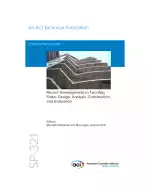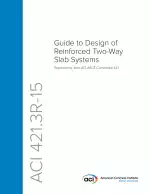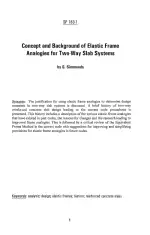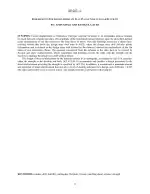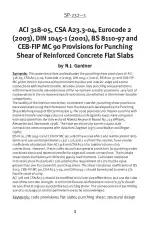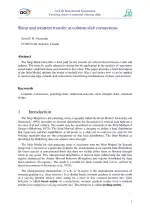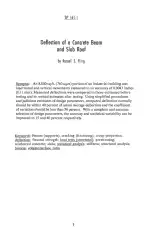Recent Developments in Two-Way Slabs: Design, Analysis, Construction, and Evaluation
Also Known As:
The ACI SP-321:2017 standard is a comprehensive report that discusses the advancements in the design and analysis of two-way slab systems, with a particular focus on safety against earthquakes. The standard is based on the "Guide to Design of Reinforced Two-Way Slab Systems (ACI 421.3R-15)," which was published by the Joint ACI-ASCE Committee 421.
The standard includes contributions from various experts in the field and covers a wide range of topics related to two-way slab systems. These topics include new design and construction methods, innovative reinforcement techniques for punching shear prevention, practical design and analysis experiences in complex geometries, showcases on serviceability and maintenance issues in reinforced concrete or post-tensioned slabs, experimental tests and numerical modeling for extreme hazards such as earthquakes, fire, blast, and progressive collapse, and nondestructive evaluation techniques for in-place two-way slabs.
The standard also provides a table of contents, which lists the titles and authors of the papers included in the report. The papers cover subjects such as plastic modeling of asymmetrically loaded slabs, probabilistic analysis of interior flat slabs, shear and punching strength of voided slabs, evaluation of punching shear systems for flat slabs, boundary condition effects on the static response of ultra-high-performance concrete slabs, finite element analysis of flat slabs with different shear bolt placements, application of inclined shear reinforcing assembly for slab-column connections, modeling of reinforced and fiber-reinforced slabs under impact loads, highly effective lattice punching shear reinforcement, inclined stirrups and inclined stud shear reinforcement in zones of high shear, inclined headed stud shear reinforcement, and design of flat plate voided concrete slab systems.
| Language(s) | English |
| File Size | 11.9 MB |

